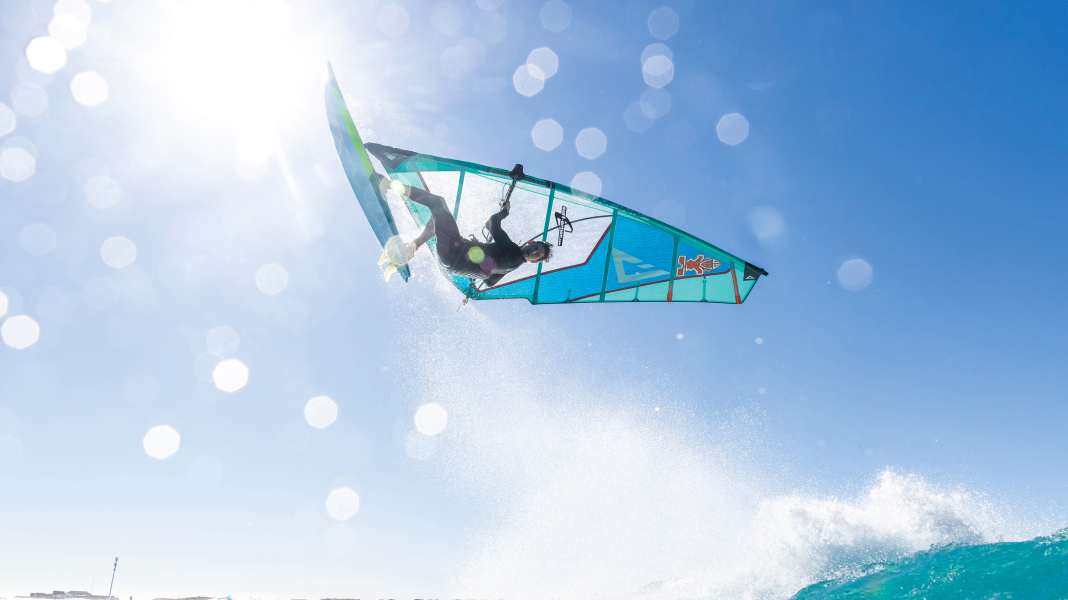
If you want to learn the front loop, you need 80 per cent courage and 20 per cent technique. With the backloop, it's exactly the opposite. Because the backloop - unlike the front or push loop - is not a rollover in the true sense of the word, but rather a disc bounced into the wind, comparatively little effort is required to tackle the move - so much for the good news. The bad news is that there is hardly any other jump that has as many hidden subtleties as the backloop - it takes a lot of practice to be able to do it consistently in changing wind and wave conditions. With the right tips, you too will soon be able to enjoy the unique feeling of flight, because there is no other jump where you can enjoy the view as much.
Backloop - the right conditions:
The backloop is best practised in side to sideonshore conditions. Ideal are steep ramps of 1-1.5 metres and a sail size that allows you to surf fully planing but not overpowered.
If you want to learn the front loop, you need 80 per cent courage and 20 per cent technique. The reverse is true for the back loop.
If you want to tackle the backloop, you should be able to surf reasonably safely in the surf and master normal jumps over moderate surf waves. In contrast to the front loop, learning the back loop is less dangerous, but a helmet can still be useful during the practice phase.
The phases of the backloop
Like every jump, the backloop can also be divided into several phases. We will show you the key points below:
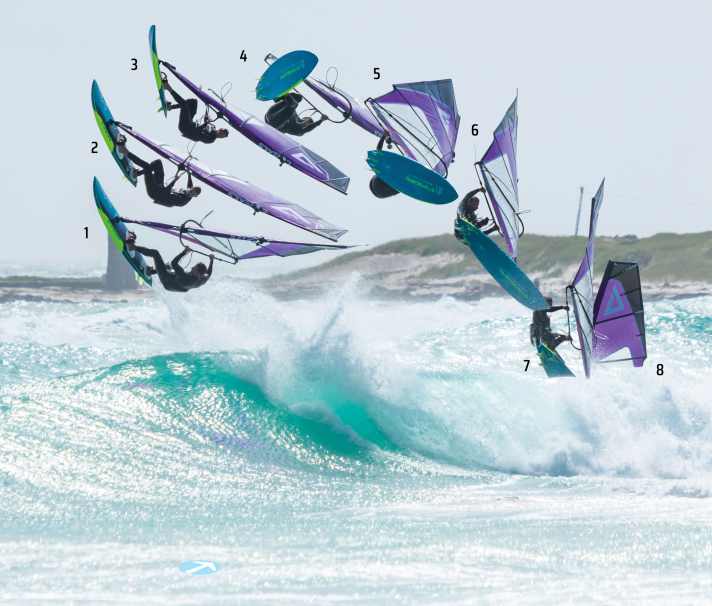
Take-off and climbing phase:
1-2) Pick up enough speed on a half-wind course, aim for a steep ramp and unhook from the harness. Before jumping off, slide the sail hand on the boom further back towards the clew, this will help you in the flight phase - more on this in a moment. Ideally, you should hit the wave at the steepest point immediately before breaking, as the backloop is a jump that requires a vertical flight curve. During the climb, try to convert the power of your sail into height and just climb for the time being: As with normal jumps, this can only succeed if you keep the sail fully taut and adopt a compact body position.
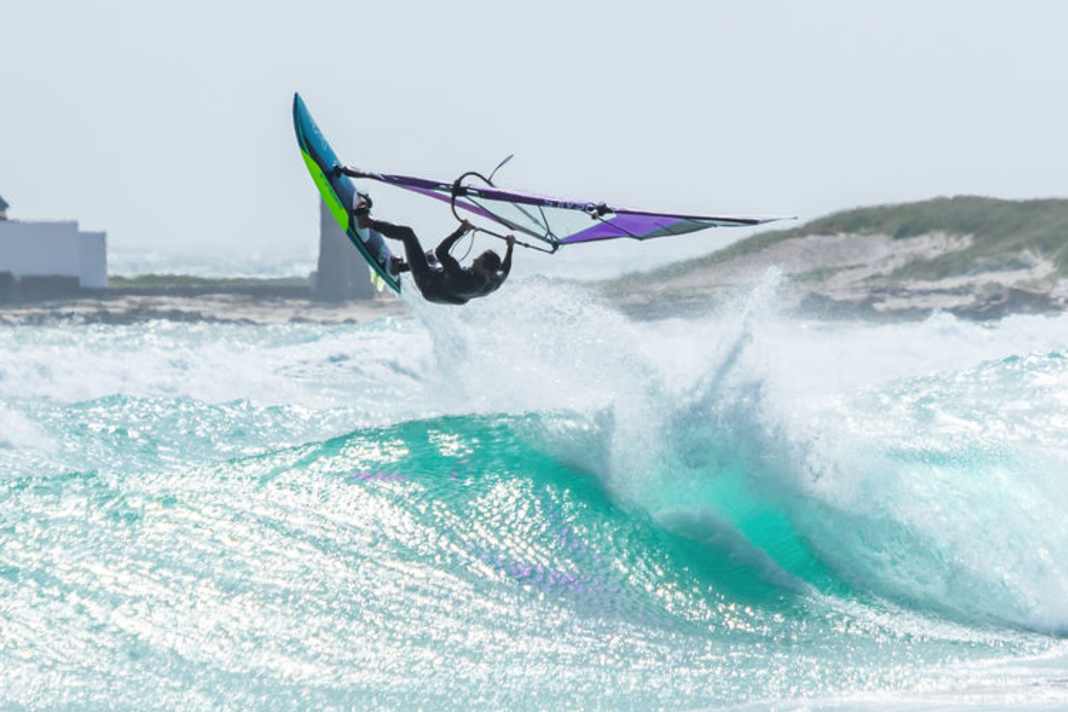



Apex:
3-4) Just before you reach the apex, the body must have reached a compact position - if you don't manage this, there is a high risk of over- or under-rotating at the end of the jump. So try to pull the boom towards the harness, the closer you are to the rig, the better! During the backloop, you initiate the rotation by turning your head and looking over your front shoulder towards the water - a goosebump moment that will quickly teach you to enjoy the view. The right timing for initiating the rotation depends on the conditions and jumping height and requires a lot of practice: in diagonally onshore conditions and lower jumping heights, you initiate the rotation a little earlier than in sideshore wind or high altitude, for example.
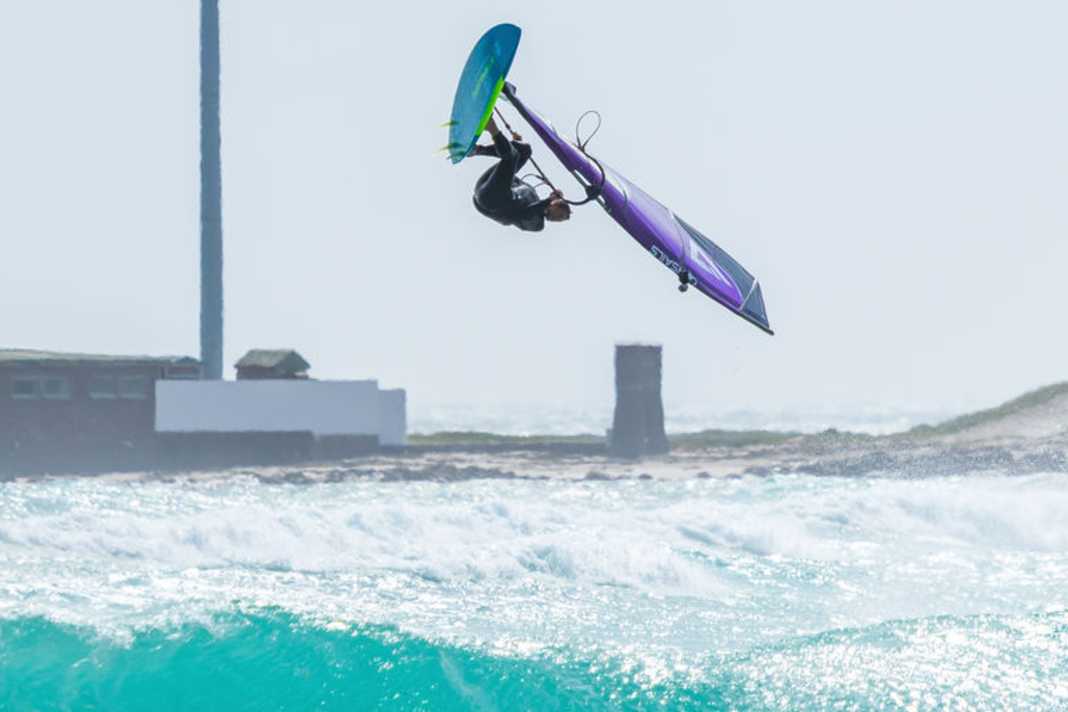


Descent & landing
5-6) In order to control the descent, it is essential to keep the sail fully taut. You can do this better if you have already placed the sail hand further back on the boom before the jump, especially to prevent over-rotation. Aim for the water surface for the following landing.
7-8) In contrast to almost all other jumps, the backloop is ideally landed with the bow first and on a downwind to low downwind course. Your sail will be blown from the leech - to prevent the wind from ripping it out of your hands, you should keep the sail fully taut during this phase. Depending on the height of the jump, you may dive quite deep but smoothly into the water before finally opening the sail again and picking up speed.
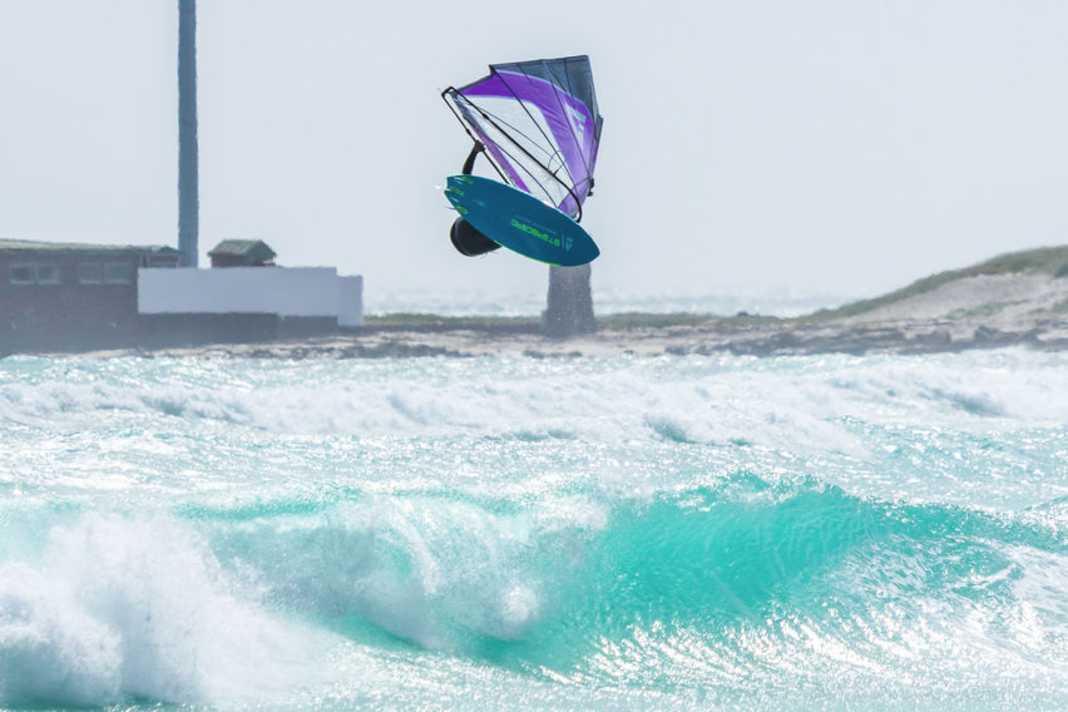



Backloop - the preliminary exercises
Anyone who has read the description of the back loop will have realised that a compact body position is the key to controlled rotation. And it is precisely this posture that can be practised well in isolation - e.g. with a floaty jump.
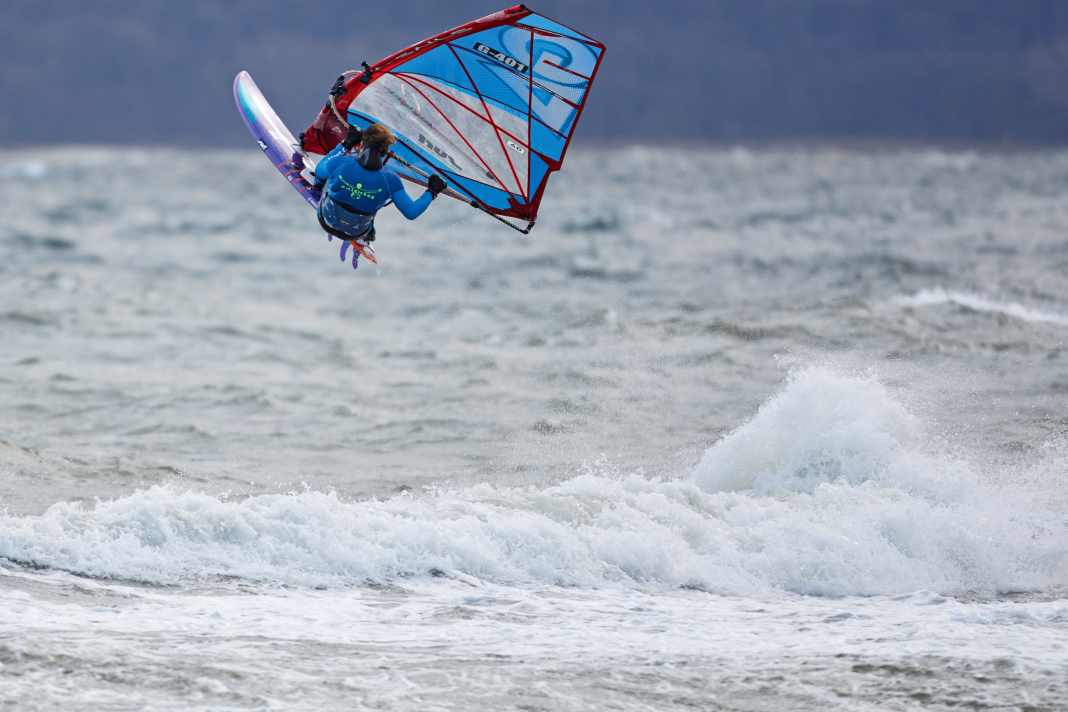


Get as much speed as possible and take off over a small wave. The more you pull the boom towards the harness (pull-up!), the more compact your body position will be. A wide grip on the boom (sail hand reaches wide towards the clew) is helpful. The legs also play their part. Pull the back leg in particular strongly, the knee almost touches the fork!
This is how you steer in the air:
Flo Jung shows how you can control the dip angle during the landing approach on land:
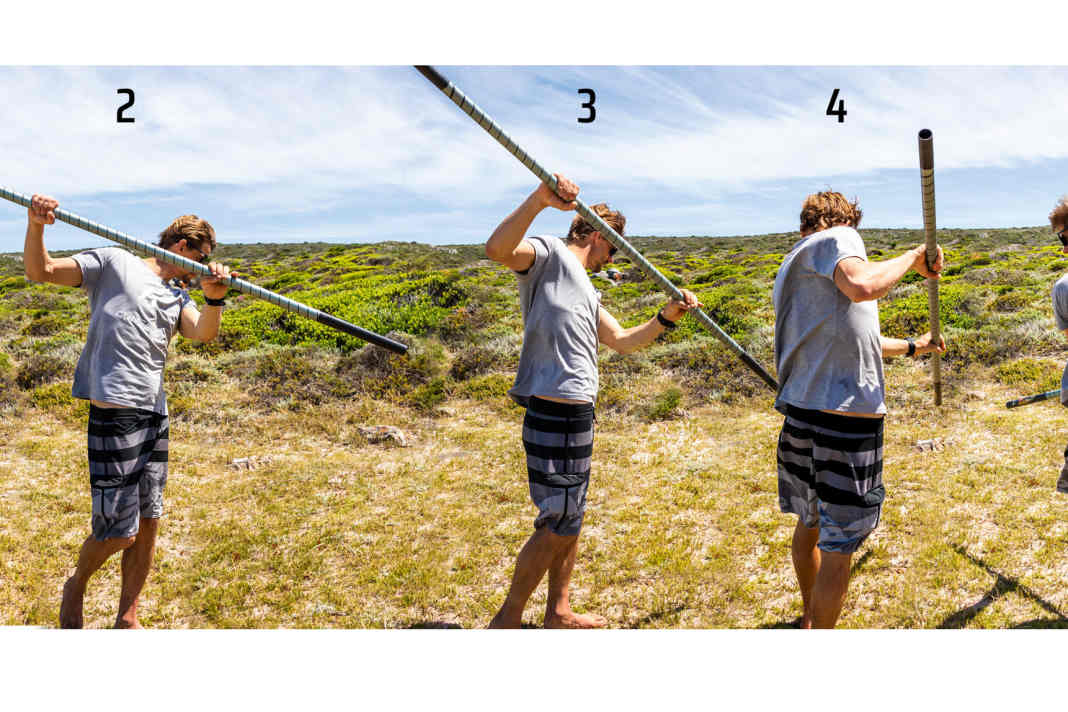


During the climbing phase, Flo pulls close to the sail and initiates the rotation shortly before the apex by looking over the front shoulder (1 & 2). There are generally two scenarios when learning the backloop - over- or under-rotation.
Overrotation: If you initiate the rotation immediately after take-off or open the sail in the air, you run the risk of over-rotating - a flat landing or a crash into the boom can be the result. The most successful way to prevent over-rotation is to have a wide grip on the boom and to consistently hold it tight with the sail hand (3). During the descent, Flo pushes the sail past the body towards the bow (4), which slows down the rotational speed. This steering impulse corresponds to a dropping movement that keeps the bow on a downwind course during the descent.
Underrotation: In contrast to over-rotation, under-rotation is usually not a problem, as you land next to or under the rig in the water without any risk of injury. Slight under-rotation can be particularly useful in the initial learning phase to familiarise yourself with the landing. However, if under-rotation becomes the rule, the rotation speed can be deliberately increased during the descent by moving the rig past the body towards the stern - similar to an anluv movement. It may be necessary to accelerate the rotation in this way, especially in small waves and cross onshore winds (and therefore naturally lower jumping height). Another way to avoid under-rotation is to initiate the rotation a little earlier by looking over your shoulder.
Backloop - typical errors
Finally, we have compared the classic backloop error with the ideal position.
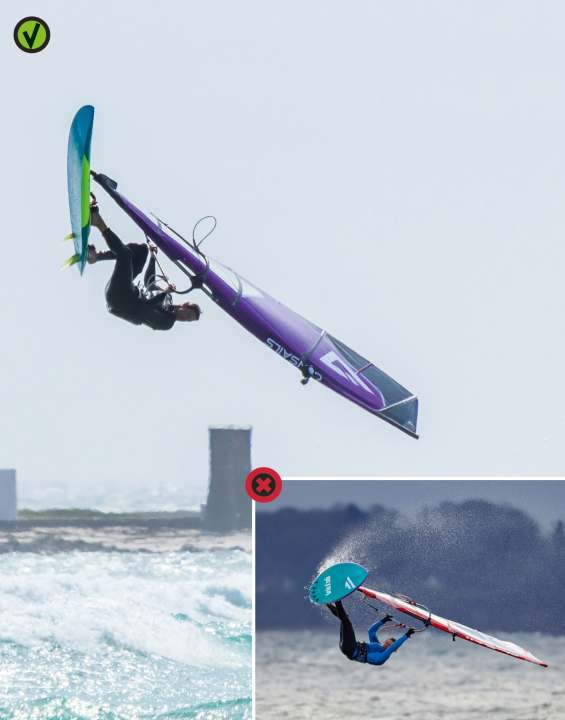
If you can see the water under your arm during the backloop (error image on the right), this is a sure sign that your arms and legs are too stretched and you are therefore too far away from the rig. This makes the right timing a lottery. If the jump height is low, you will usually under-rotate, and if the height is high, you will be snapped straight into the second rotation - no fun. The ideal picture above is different: Because Flo is hanging as close to the rig as possible, you can only look over your shoulder towards the landing point and not under your arm. Try it out!
You can also find more tips on manoeuvres and jumps HERE on the YouTube channel.

